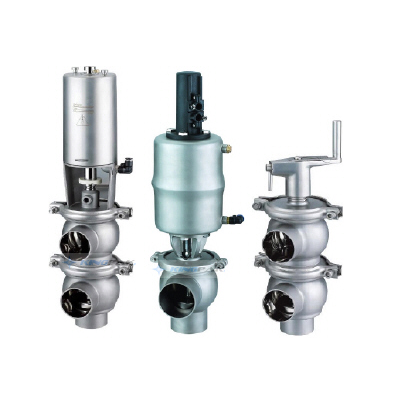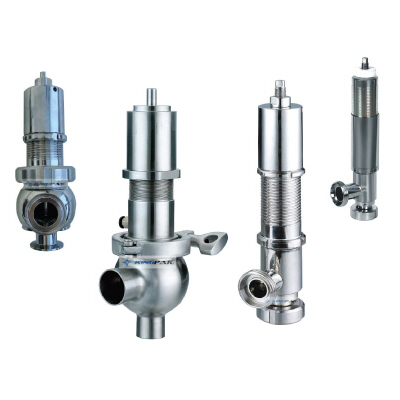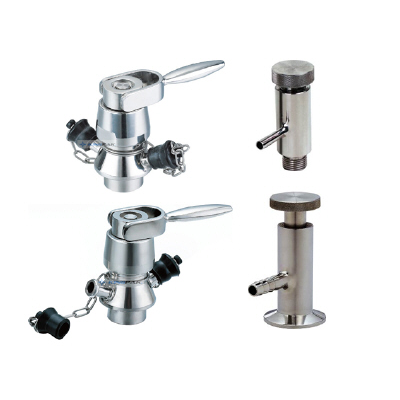Vanne sanitaire VS vanne ordinaireLes vannes standard, quelle est la différence ? Lorsque les systèmes de contrôle des fluides et la pureté des produits sont importants pour vous, les vannes standard ne suffisent tout simplement pas. C'est là qu'intervient le choix critique entre les vannes sanitaires et les vannes générales. Comprendre la différence permet d'obtenir des performances optimales pour protéger votre réseau de tuyaux en acier inoxydable et raccords de tuyauterie en acier inoxydable.
Quelle est la différence ? Vanne sanitaire VS vanne ordinaire !
- Les vannes ordinaires contrôlent le débit des fluides et sont conçues pour donner la priorité à un usage industriel général. Elles peuvent présenter des fissures internes qui piègent les fluides.
- Les vannes sanitaires sont conçues pour l'hygiène et sont destinées à empêcher la contamination et à faciliter le nettoyage. Elles conviennent parfaitement aux industries sensibles.
Vannes sanitaires : Quelle est leur importance ?
Les vannes sanitaires ont surfaces lisses et polies sans crevasses internes, ce qui réduit le risque de prolifération des bactéries. Minimise l'accumulation de produits.
Il est conçu pour permettre le nettoyage automatique (Nettoyer en place/Vapeur en place). Cela permet d'économiser du temps et des ressources et d'améliorer considérablement l'efficacité opérationnelle.
Les matériaux sont généralement en acier inoxydable 316L pour résister à la corrosion. Ceci s'applique également à la production d'aliments, de boissons et de produits pharmaceutiques.
De nombreuses industries exigent une conception sanitaire, notamment 3-A normes sanitaires. La conformité évite des sanctions coûteuses et vous permet d'accéder au marché pour vos produits.
Un nettoyage plus facile signifie des changements plus rapides, ce qui permet d'optimiser le temps de production.
Conception et matériau : Vanne sanitaire VS vanne ordinaire
Comparaison des conceptions
| Fonctionnalité | Vanne sanitaire | Valve ordinaire |
|---|---|---|
| Surface interne | Lisse, poli (faible Ra) | Finition plus rugueuse, coulée |
| Crevasses/Poches | Minimisé, éliminé | Courant, peut piéger les médias |
| Drainabilité | Autovidage, pas de jambes mortes | Variable, pas de priorité |
| Connexions | Pinces sanitaires, raccords à souder bout à bout | Brides, raccords filetés |
| Nettoyabilité | Conçu pour CIP/SIP | Nettoyage manuel, démontage |
| Contact avec le matériel | Acier inoxydable de haute qualité (316L), joints d'étanchéité conformes | Matériaux divers, souvent moins purs |
Matériaux courants pour les vannes sanitaires
| Qualité des matériaux | Principaux avantages | Cas d'utilisation typique |
|---|---|---|
| Acier inoxydable 304L | Bonne corrosion, bon rapport coût-efficacité | Produits laitiers, transformation des aliments de base |
| Acier inoxydable 316L | Amélioration de la corrosion et de la soudabilité pour la pureté | Pharma, biotechnologie, produits chimiques |
| Alliages spéciaux | Résistance extrême, procédés ultra-purs | Des médias agressifs, des exigences uniques |
| Joints EPDM / PTFE | Biocompatible, résistant aux produits chimiques | Étanchéité critique pour la pureté |
Adaptation à l'application : Types de vannes
| Industrie / Application | Vanne sanitaire préférée | Vanne ordinaire Privilégiée |
|---|---|---|
| Alimentation et boissons | Lignes de contact produit, traitement | Lignes d'utilité publique, systèmes autres que les produits |
| Pharmaceutique | Toutes les lignes de traitement, transfert stérile | CVC, traitement de l'eau (sans processus) |
| Biotechnologie | Bioréacteurs, systèmes de fermentation | Services généraux de l'usine |
| Cosmétiques | Mélange et remplissage des produits | CVC, conduites d'eau générales |
| Traitement chimique | Produits chimiques de haute pureté, procédés spécifiques | Manipulation de produits chimiques standard, services publics |
Ce que nous faisons
Exemples de produits pour vos systèmes de tuyauterie
- Vanne de dérivation sanitaire (DN25-DN100, 1″-4″)
- Soupape de sûreté sanitaire (DN15-DN100, 1/2″-4″)
- Vanne d'échantillonnage sanitaire (DN10-DN25, 3/8″-1″)
- Vanne à membrane sanitaire (DN15-DN50, 1/2″-2″)
- Clapet anti-retour sanitaire (DN15-DN150, 1/2″-6″)
- Vanne papillon sanitaire (DN15-DN250, 1/2″-10″)
- Robinet à boisseau sphérique sanitaire (DN15-DN100, 1/2″-4″)
- Robinet à boisseau sphérique en trois parties
- Vanne à bille basse température
- Robinet à boisseau sphérique haute pression
- Robinet à tournant sphérique flottant
- Vanne à bille pour le vide
- Vanne papillon à vide
Vous voudrez peut-être aussi lire :
L'étanchéité (étanchéité à l'air) est un point très important pour les vannes à vide
Nous contacter
- RM901 No.22 Tangjiaqiao Road Wenzhou Chine
- +86 577 8551 1171
- [email protected]
- https://www.kaysuns.com/






